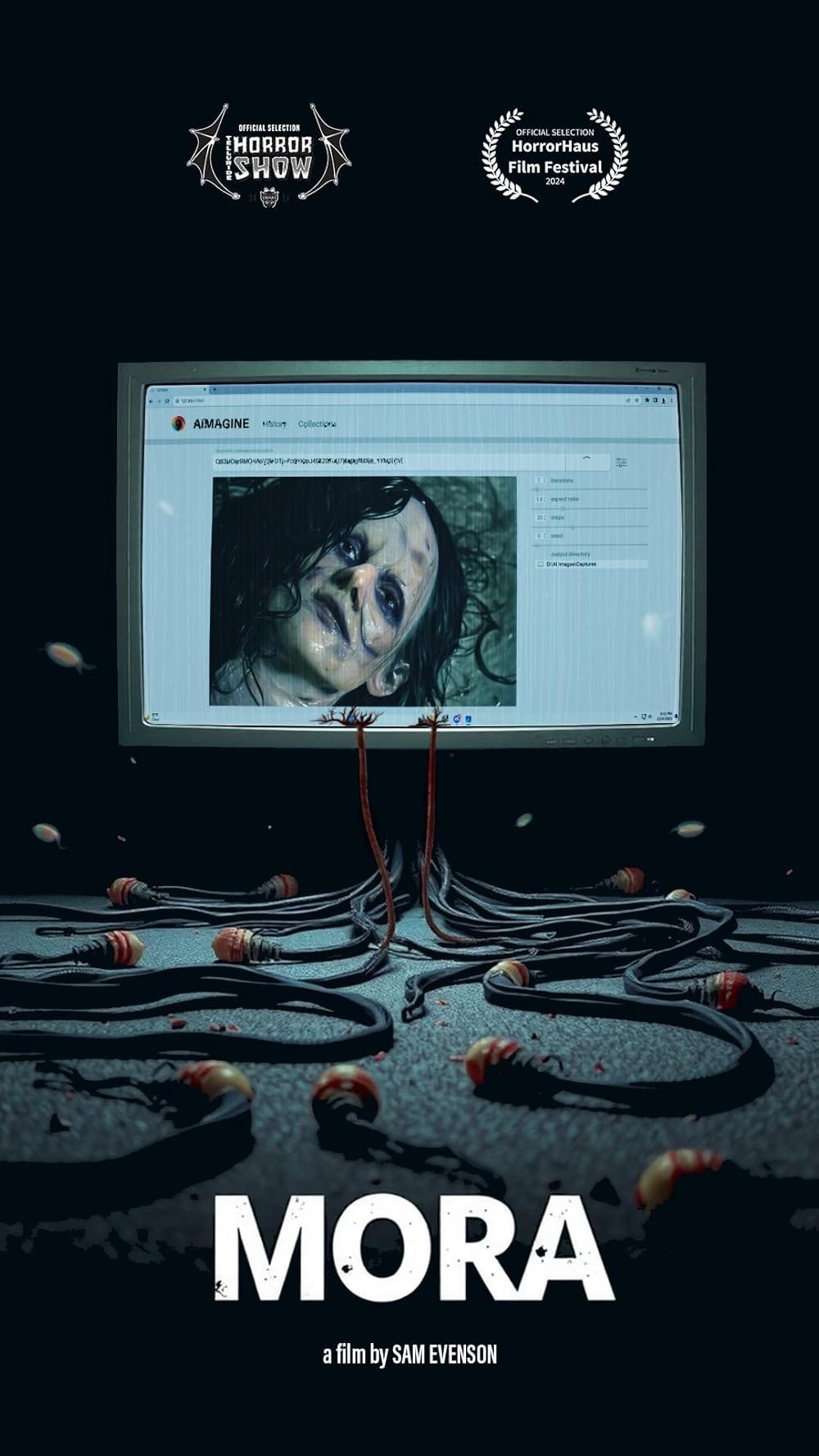American filmmaker Sam Evenson has recently released a new short film titled Mora which contemplates the ethics behind Artificial Intelligence (AI) generated gore art. In today’s climate, where the public constantly debates the ethics behind AI-generated art, Mora encourages discussions around a specific niche that people often shy from; Gritty and violent gore AI art, which even in its human-made form is still considered a taboo subculture. Yet, Mora’s narrative shows just how important it is for industry practitioners and the public alike to have these conversations, as like it or not, AI-generated art is here to stay. This is why Mora by Sam Evenson is aligned with the United Nations Sustainable Development Goals of Industry, Innovation and Infrastructure and Decent Work And Economic Growth.

The short film follows an artist in his quest to uncover the truth behind ‘Mora’ an internet-based urban legend that says that a woman named Mora will appear in every piece of AI-generated gore art with specific prompts such as blood, maggots and tortured people. This defies the very concept of artificial “intelligence” generated art, in which each generated piece is to be a unique new piece even if it was generated with the same prompt. Mora haunts users who generate her image, making her a sort of stereotypical Bloody Mary spectre, who uses the internet to haunt different people instead of mirrors.
Trailer to Mora by Sam Evenson. Video courtesy of Grimoire Horror/YouTube.
The film eventually reveals that the ghastly Mora was once a real-life woman who had been kidnapped, tortured and killed for a snuff film. The concept of the snuff film is another urban legend, propagating the idea that certain films, photographs or videos containing heavy violence and even murders for the purpose of entertainment, are in fact recordings of real-life events. When the internet was introduced to the public, the influx of content from around the world revived the myth of snuff films as content that is often re-shared without proper credits.

In the film’s world, the emergence of gore AI art has awakened Mora’s spirit, as the film that she was killed for is being used as a source material for AI-generated art. Here, the film properly pushes audiences to question the ethics of AI-generated art. Considering that AI-generated art does pull from online sources, depending on text-based tags that have been uploaded with those images, who is to say that some of these images are not poorly tagged photographs of real deceased bodies and depictions of violence, not fictional ones? As a case study, poorly tagged online images have already led AI-generated art to contain racial biases and stereotypes.
Mora by Sam Evenson. Full film courtesy of Grimoire Horror/YouTube.
In Mora, Sam Evenson dives deep into the ethical complexities of AI-generated gore art, a subculture that blends taboo and technology. By weaving together the myth of Mora, the film prompts viewers to question the unsettling possibilities of AI art sourcing its inspiration from real-life atrocities. It challenges viewers to confront the potential for technology to blur the lines between fiction and reality, raising critical concerns about the exploitation of human suffering in the pursuit of art. As AI continues to evolve, Mora serves as a timely reminder of the need for ethical discussions and boundaries in the creative industry.
Find out more about Mora and other short films by Sam Evenson on his YouTube channel Grimoire Horror or Instagram @samuel_evenson.
